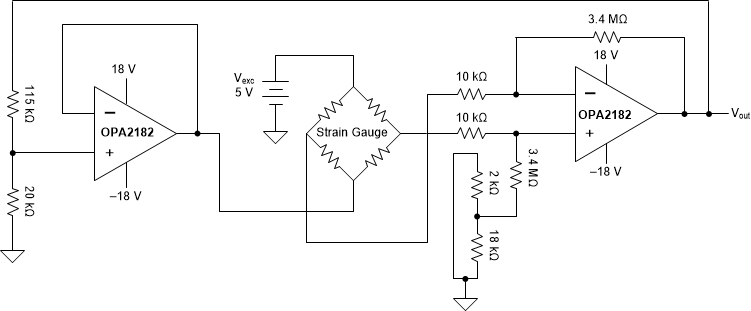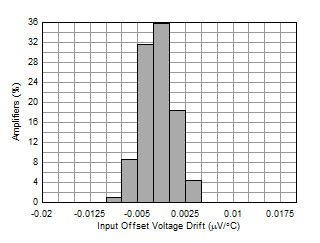SBOS936E November 2019 – August 2022 OPA182 , OPA2182 , OPA4182
PRODMIX
- 1 Features
- 2 Applications
- 3 Description
- 4 Revision History
- 5 Device Comparison Table
- 6 Pin Configuration and Functions
- 7 Specifications
- 8 Detailed Description
- 9 Application and Implementation
- 10Device and Documentation Support
- 11Mechanical, Packaging, and Orderable Information
Package Options
Mechanical Data (Package|Pins)
Thermal pad, mechanical data (Package|Pins)
Orderable Information
3 Description
The OPA182, OPA2182, and OPA4182 (OPAx182) are ultra-low noise, fast-settling, zero-drift, high-precision operational amplifiers, These devices provide rail-to-rail output operation and feature a unique MUX-friendly architecture and controlled start-up system. These devices also feature excellent ac performance combined with only 0.45 µV of offset voltage and 0.003 µV/°C of drift over temperature. All these features make the OPAx182 a great choice for data acquisition, battery test, analog input modules, weigh scales, and any other systems requiring high dc precision and low noise.
The MUX-friendly input architecture prevents inrush current when applying large input differential voltages and improves settling performance in multichannel systems. Moreover, the controlled start-up system rejects any inrush current when ramping up the supply rails, all while providing robust ESD protection during shipment, handling, and assembly.
The device is specified from –40°C to +125°C.
| PART NUMBER | PACKAGE(1) | BODY SIZE (NOM) |
|---|---|---|
| OPA182 | D (SOIC, 8) | 4.90 mm x 3.90 mm |
| DBV (SOT-23, 5) | 2.90 mm x 1.60 mm | |
| OPA2182 | D (SOIC, 8) | 4.90 mm x 3.90 mm |
| DGK (VSSOP, 8) | 3.00 mm x 3.00 mm | |
| OPA4182 | D (SOIC, 14) | 8.65 mm x 3.91 mm |
| PW (TSSOP, 14) Preview | 5.00 mm x 4.40 mm |
 OPA2182 Bridge Sensor Application
OPA2182 Bridge Sensor Application OPAx182 Offset Drift
OPAx182 Offset Drift